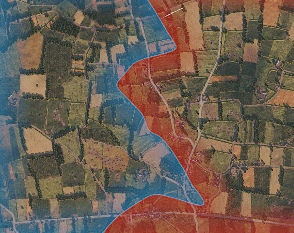@Leutnant
Delayed as this response is, I must protest against what you're trying to say. As someone who's put a great deal of effort into studying the Italian campaign in particular, nearly every factor was in favor of the defender. The terrain, problems of logistics, and weather all hampered the ability of both sides to resupply and move--and this inherently aids the defender.
Going down the list you provided, I see a lot of "attack successfully" next to those 'low scores'. Those scores are looking at K-D. Guess what? K-D usually favors the defender, especially in conditions where he possesses entrenched positions and is defending in favorable terrain--sound familiar?
In general, Allied unit performance in Italy was quite good. By my estimation the 3rd ID was probably the best (or very close to being the best) US ID on offer, period. The Canadians and Poles both showed their mettle in dislodging the 'invincible' FSJ formations. Other units like the 36th Engineer BDE performed well beyond what was expected of them, given available equipment and the scope of their training. Those boys were no slouches.
The bitter truth is, yes, man-for-man, German formations up until mid-late 1943 were superior to their counterparts in the Allied camp (ignoring first rate divisions like the 3rd ID, 1st ID). By the time the Italian campaign rolled around, the Western Allies enjoyed superiority in terms of basic training, materiel, and munitions (artillery, air support). They enjoyed parity in terms of NCO and junior officer skill, though senior command was admittedly still hit or miss.
On the other hand, German supply, training quality, and general leadership (from junior officers down) was beginning to decline. For God's sake, units like the 90. Panzergrenadier-Division "Sardinien" were likely armed with boatloads of weapons chambered in 6.5×52 mm Parravicini-Carcano; Modello 1891 rifles, Modello 30 LMGs--mediocre quality goods, backed up by hand-me-down, worn out le M.G. 34s and Gewehr 41(W)s, if those were even available.
Fallschirm-Panzer-Division „Hermann Göring“ hogged most of the good equipment, and frankly squandered it--it was no longer a top-of-the-line fighting formation. Panthers and Elefants were sent into combat, and quickly lost due to both mechanical issues and and an inability to stem the Allied advance (and thus prevent those vehicle from being overrun). Surely, if the Germans were still the masters of combat, they would have been able to hold their positions against the smelly Amerikaner and Britische!
Once you get to the Normandy campaign, you're looking at a few token formations, elite ones, propping up a disproportionately large number of trash formations. Units like the 29th ID--which was seeing its first combat--were able to, albeit slowly and painfully, carve a path through the Bocage, into, through, and past St. Lo, and on through France.
In the battles were the Wehrmacht and SS were finally able to readily administer bloody noses to the Allies; Aachen and the Hürtgen Forest, you are again looking at German units tucked into formidable defensive positions or utterly inhospitable terrain that invariably favored the defender, respectively. In both cases, there were precious few German formations still worth calling 'elite', or even standard; the vast majority of the rest of what was on offer were simply large mobs of untrained reservists and the beginnings of the Volksgrenadier formations.
Around Aachen, the 2nd AD, with its woefully inferior Sherman tanks (easily eliminated by even glancing blows from 9 mm weapon systems) were able to give better than what they got--they managed a positive K-D with 'inferior' equipment while on the offensive.
True, the replacement system in place in the American camp was sub par. Yes, troops were generally inexperienced replacements. But their training was far and away superior to the training the Germans were putting out at that point, as was the quality of their arms, coordination of forces, and leadership at nearly every level (again, barring senior command).
As for your technical arguments, yes, the Panther and Tiger were marvels of engineering. Little good that did them; even with their superior technical specs, they didn't get a good enough K-D to have ever even had a hope of changing the course of the war, on either the Eastern or Western. Yep, the M4 medium was Panzerbait, and a tasty snack for any hidden 7,5 cm Pak lurking around. I'll let you in on a little secret though: the Cromwell and T-34 fared no better, and neither did the Panzer IV in the face of any half-competent 57 mm or 3"/76 mm-armed TD crew. The medium tank was food during the war, plain and simple.
I will freely admit that the Soviets did more to crush the Reich's forces than the Western Allies put together. That said, there was still at least the hope in the German camp, however slim, of a prolonged war against the Bolshevik menace--until forces of the Western Allies came ashore, in force, all along the Normandy coast.




























 cblanco ★
cblanco ★  보드카 중대
보드카 중대  VonManteuffel
VonManteuffel  Heartless Jäger
Heartless Jäger 